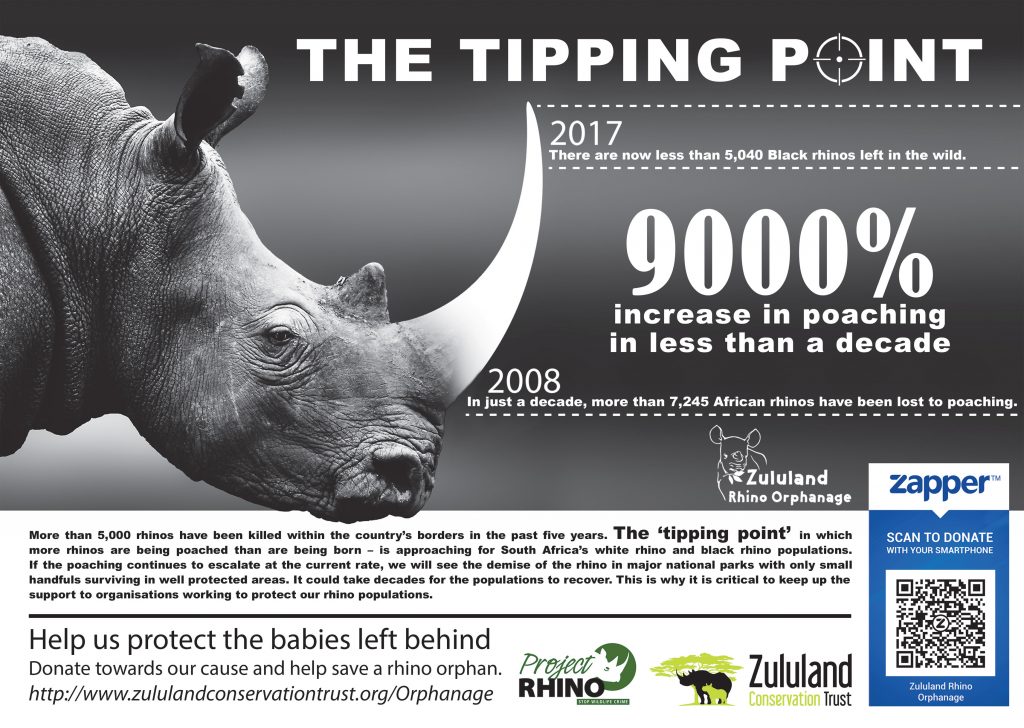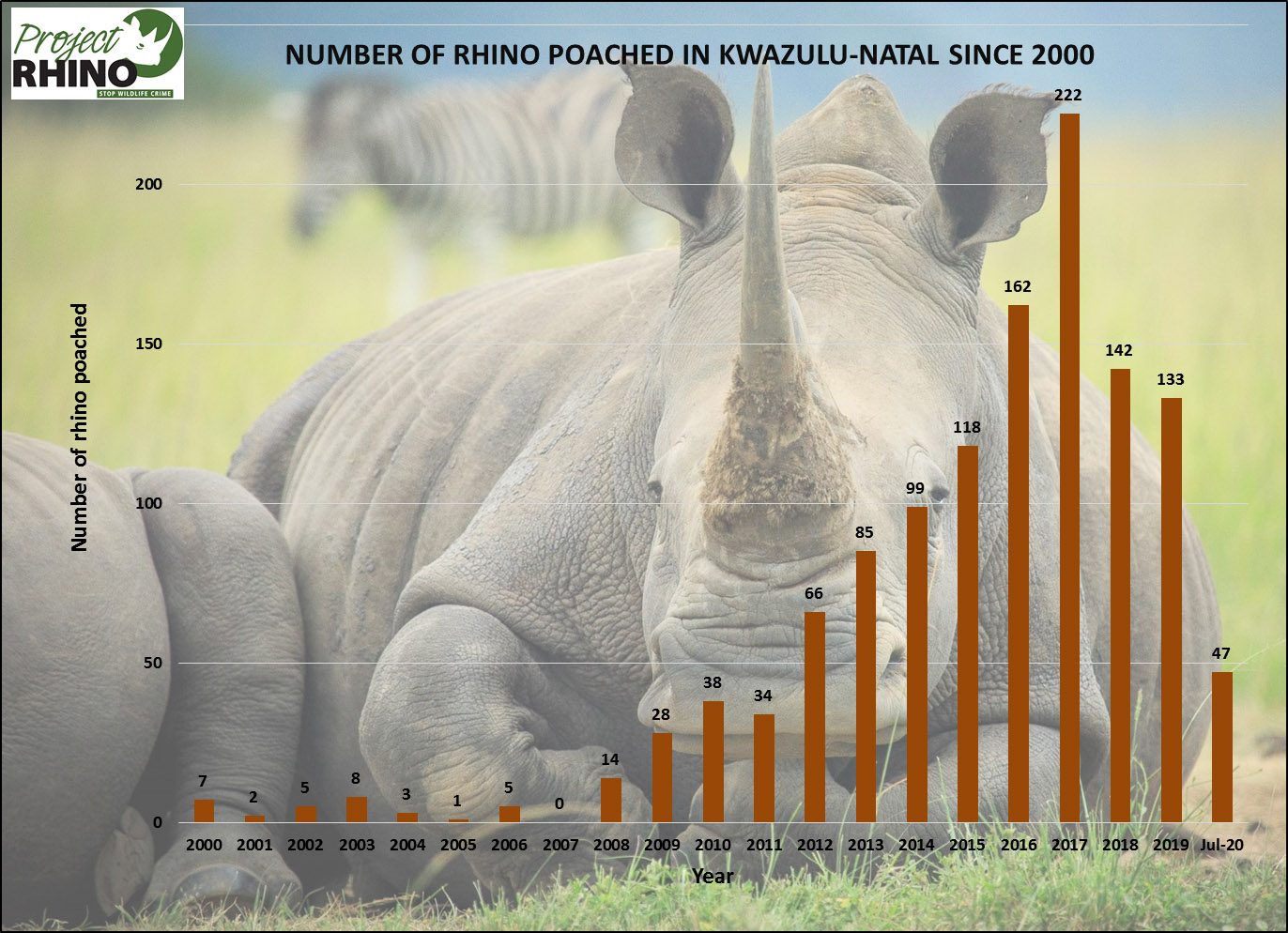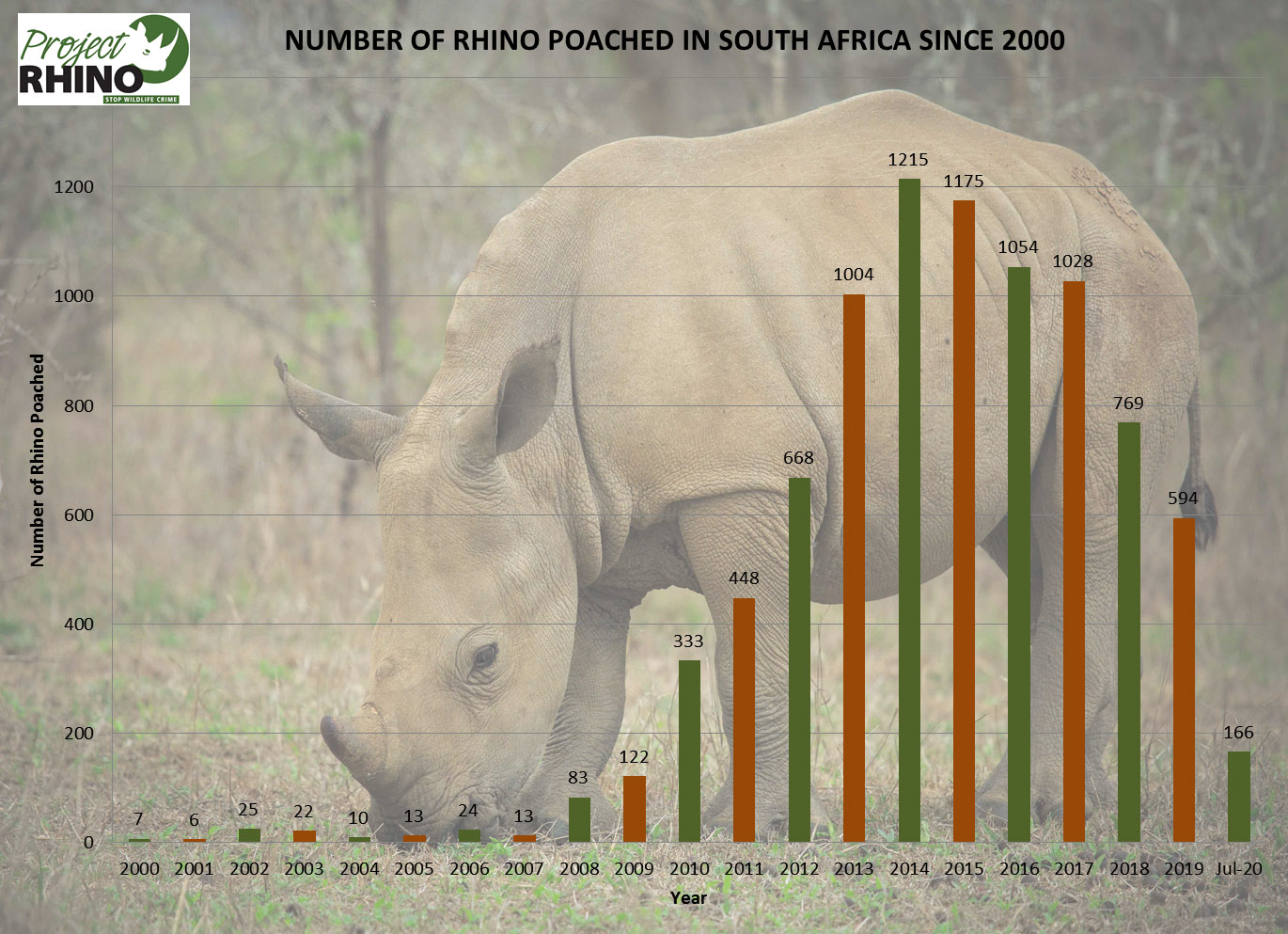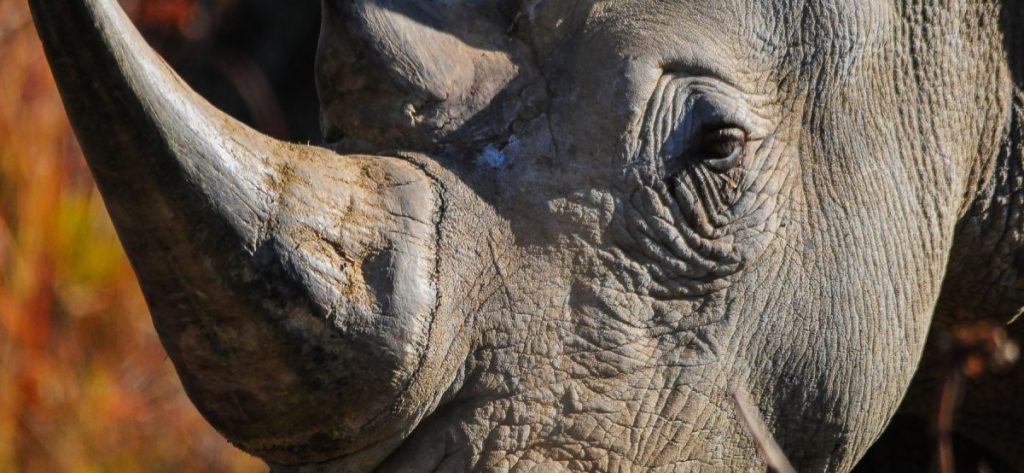THE POACHING CRISIS
WELCOME TO KWAZULU-NATAL:
PROUD HOME OF THE SOUTHERN WHITE RHINO
Where and how it started
Fueled by a growing demand for rhino horn in primarily China and Vietnam and driven by international criminal syndicates, rhinos around the world are under threat of extinction. During 2012, both the Western black rhino and Vietnamese population of Javan rhino were declared extinct and there are now only two Northern White rhino left in Africa, both of which are female.
South Africa is now one of the last countries to have a significant population of rhinos left in the wild – one of the reasons why South Africa is bearing the brunt of what can be described as one of the worst global wildlife conservation crises of the past 100 years.
More than 8,000 rhinos have been killed within the country’s borders in the past decade. The ‘tipping point’ – in which more rhinos are being poached than are being born – is approaching for South Africa’s White rhino and Black rhino populations. If the poaching continues to escalate at the current rate, we will see the demise of the rhino in major national parks with only small handfuls surviving in well-protected areas. It could take decades for the populations to recover. This is why it is critical to keep up the support to organisations working to protect our rhino populations.
 KwaZulu-Natal Poaching Statistics
KwaZulu-Natal Poaching Statistics
In 2015, KZN lost 118 rhino to poaching out of a national total of 1175. In 2016, the poaching deaths in KZN increased to 162 out of the national total of 1054, and 222 Rhino in 2017. In 2018 this figure decreased slightly to 142 and 133 in 2019. The official KZN total – as reported by the Department of Environmental Affairs in July 2020 – stands at 47 deaths, but we anticipate a significant increase in poaching attempts as travel restrictions ease post-lockdown.


Rhino Conservation in KwaZulu-Natal
KwaZulu-Natal is renowned for bringing the Southern white rhino back from the brink of extinction. Today, it is home to the second-largest population of white rhinos left in the world and 25% of South Africa’s population of the critically endangered black rhino.
Thought to be extinct, around 40 Southern white rhinos were unexpectedly discovered in northern KZN (Zululand) in 1894. The finding of these last survivors of a once-prolific species led to the proclamation of the now world-famous iMfolozi Game Reserve, which was once the tightly-controlled Royal Hunting Grounds of King Shaka Zulu. By the 1960’s, white rhino numbers had increased to 600 and so began Operation Rhino and the return of Southern white rhino into habitats across Africa – including the Kruger National Park – and to wildlife parks in Britain, USA and Europe. Today, KwaZulu-Natal is proudly known as the home of the Southern white rhino.
It is thanks to KZN’s rhino conservation pioneers, such as the late Dr Ian Player, Magqubu Ntombela and others that by 2010, Southern white rhinos around the world numbered 22,000: the greatest rhino conservation success story ever. But now sadly, it is one that is dangerously close to being unravelled as more and more rhinos are falling victim to poachers’ guns.
This province has a proud history of saving the rhino: We did it once and we need to fight to do it again. It is an international wildlife crisis that needs us to all work together to save a species that has been with us for more than 50 million years.
Thank you for taking time to find out more about Project Rhino’s work to safeguard the rhinos of KwaZulu-Natal – one of the most historic and beautiful conservation regions in the world – and appreciating for yourself, the challenges we are facing.

